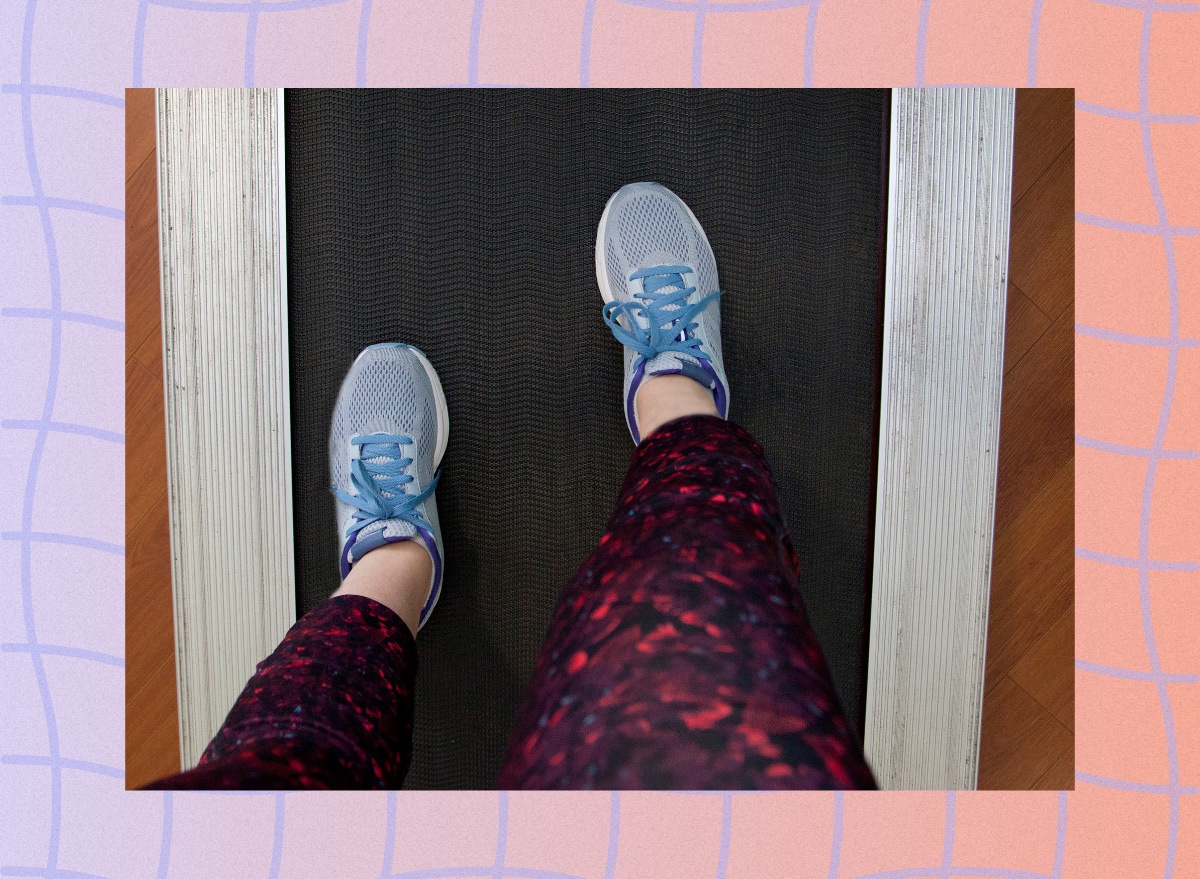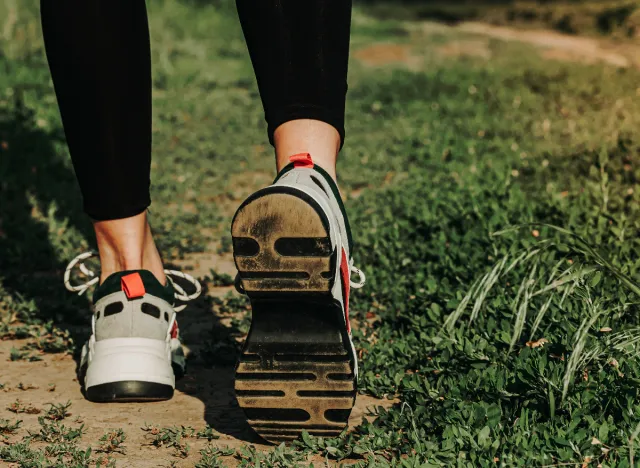6 Signs Your Walking Shoes Are Too Old (And Dangerous)

Walking is a favorite form of cardio for many individuals. And here's something many walkers may not consider: If you aim to walk five miles a day, you are reaching approximately 150 miles a month! That distance translates to a lot of wear and tear on your footwear. When covering this much ground, it's essential to know when it's time to upgrade to a new pair of walking shoes. After all, there are many ways your footwear can be compromised—and the signs are deeper than how they appear on the outside. So if you're pushing your steps to the max, we've learned the most common signs it's time to purchase a new pair of walking shoes.
Replacing your walking shoes on a timely basis is important for your overall health and well-being, not just for aesthetics. "Worn-out shoes can contribute to problems at your foot like bunions, hammertoes, heel and arch pain," explains Dr. Milica McDowell, doctor of PT, certified exercise physiologist, and VP of operations at Gait Happens. "Worn-out shoes can contribute to problems up the body like knee and hip pain or even low back pain, as your shoe is the connector of your body to the ground, and then the shoe is uneven or damaged/worn out, it makes an unstable platform for your body to be supported on."
Typically, the rule of thumb for regular walkers is to replace their walking shoes every 300 to 500 miles, says Jerick Sobie, a board-certified pedorthist and co-owner of Lucky Feet Shoes. "This translates to around every six months for a daily walker, but it depends on factors like body weight, walking style, and terrain," he notes. "Lighter walkers on smooth paths may get closer to that 500-mile mark."
Now, let's dive into the telltale signs it's time for a new pair of walking shoes.
Your shoes aren't as springy or soft as they once were.

Let's face it: It's common to get comfortable in your daily sneakers. However, be mindful of how the cushioning feels. "If the shoes don't feel as soft or springy as they used to, the midsole might be compressed," Sobie points out.
Your feet feel tired or sore.

Another red flag that it's time to ditch your current pair of walking shoes is if your feet feel tired or sore in certain areas. If they didn't feel that way before you headed out on your walk, it's time to shop.
You have lower back, knee, or hip discomfort or pain.

Pain in the lower back, knees, or hips could indicate a lack of shock absorption in your shoes. "Over time, [not enough shock absorption] could increase your risk for injuries like plantar fasciitis, shin splints, or stress fractures," explains Dr. McDowell.
There's no longer arch support in your shoes.

In certain cases, the upper fabric of the shoes may start to stretch out or even tear. But what you really need to be aware of is any loss of arch support. When the shoe structure starts to break down, you need to move on to another pair.
Your traction or tread is compromised.

Your treads must be in solid shape to provide traction on the road. Why is that so important? Traction helps you avoid slips and falls. The treads kick up the amount of friction between your walking shoes and the road. The material and pattern of your treads are key aspects of how successfully your shoes will grip the pavement or trail.
"If the tread is worn down and looks more flat than grippy, it's a red flag," stresses Sobie.
The sole is starting to wear out.

The sole area is one of the first places where walking shoes begin to wear out, so take note.
"A good way to see if your shoes should be replaced is if you look at the shoes from the heel, looking forward toward the toe. Is the shoe tilted inward or outward, or crushed on the laces area at all? This is a sign of excessive wear and indicates that your shoes should be replaced," explains Dr. McDowell.









